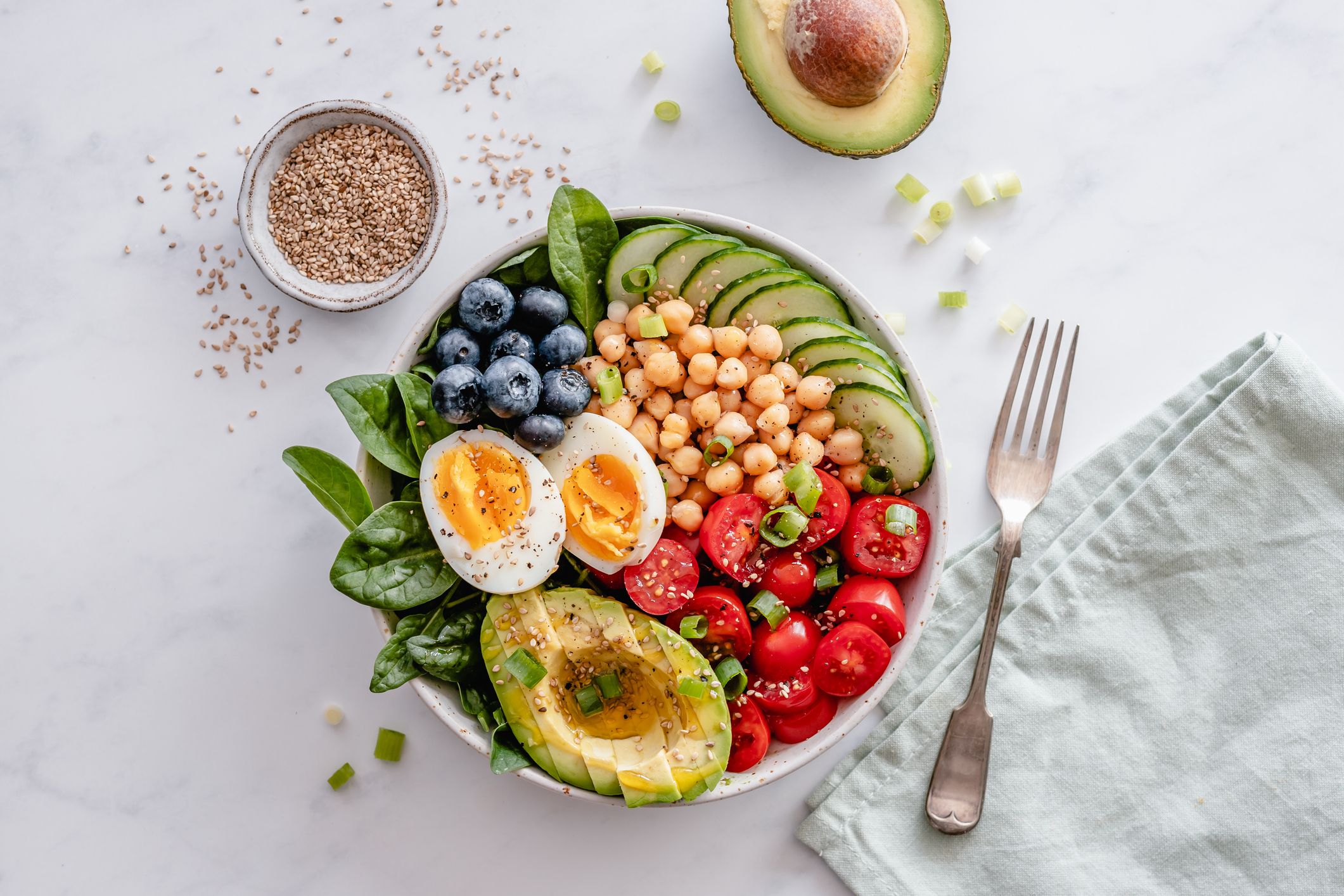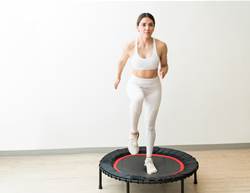Awards season is upon us! Plenty of celebs have been flashing their toned arms in fabulous outfits (yes, despite the freezing weather abroad), including our favourites Margot Robbie, Michelle Yeoh and Angela Bassett, who all looked stunning at the Golden Globes. If you feel like channelling some red carpet glam of your own but need a confidence boost, we have some great arm-toning tips for you to try. Here's everything you need to know about your arms.
“In general, men have more lean body mass, so they tend to have less body fat overall,” says dietitian and fitness professional Shana Maleeff. And while genetic makeup and disposition decide how much fat you have and where you store it, men tend to store fat in their stomach, while women often store fat in several places, including on their arms.
There’s also a strong hormonal component to fat deposits, which is why more women may experience arm fat. “Your biological sexual characteristics will have a lot to say about where your body stores its fat, and the arms are one area where fat is more common in women than in men,” says personal trainer Caroline Grainger.
Since women tend to have lower testosterone levels than men, building muscle can also be a more extensive process. “Couple this with stress, poor diet, lack of sleep, weight fluctuations due to pregnancies and/or menopause, and genetics—these things are a recipe for fat to make a home in the arms,” says fitness trainer Dr Megan Johnson McCullough.
How long does it take to lose arm fat?
First, fat is an essential nutrient that our bodies need. “Every cell in your body is made of at least some of it, and it’s essential for things like healthy metabolism, temperature regulation, and protecting your organs from damage,” Grainger says. Further, having too little body fat could be a health issue because enough body fat keeps the body warm, protects vital organs, and helps with cholesterol levels and heart function, Maleeff adds.
Maintaining a healthy weight can help your body function better and protect you against various diseases, and you can do this by finding the right balance between your diet and how much energy you need. How long it takes to lose excess fat depends on consistency, diligence to healthy lifestyle change, genetics, weight loss, and the amount and type of exercise.
“The typical person can lose fat in 4 to 6 weeks following a specific training and diet regimen,” McCullough says. She adds that the more output of kilojoules (calories) over this duration will lead to results.
So, what’s the best way to lose arm fat?
Multiple experts believe that the best approach to losing arm fat is an overall weight loss strategy that features a balanced diet, resistance training, and healthy lifestyle choices. “The body will choose where it stores fat and loses weight,” Maleeff says. “Those factors can’t be controlled.” There is also no exercise or diet that will burn fat from one area over others. However, you can make healthier lifestyle choices to decrease overall body fat and increase muscle mass.
“Healthy weight loss is evenly distributed across the body, and happens at a rate of about a half pound to two pounds per week,” Maleeff says. If your goal is to eliminate arm fat, then you should aim to target your overall body weight and fat percentage, Grainger adds.
Even if you don’t like working out, there are a few ways you can slim down and tone your arms.
1. Try a kilojoule (calorie) deficient diet
To lose weight, you’ll need to eat and drink less than you burn. The kilojoules (calories) — or units of energy — you burn in a day are used to keep your body functioning at rest (resting energy expenditure), digesting and metabolising food (thermic effect of food), and helping you move (activity energy expenditure). If you provide your body with less kilojoules (calories) than it needs to support these three functions, then you put your body in a calorie deficit, which can result in weight loss. Speak to your doctor or a dietitian to determine exactly how many kilojoules (calories) you should be consuming and burning a day.
2. Cut down on refined sugars
Although sugary drinks and cookies are so tasty, a diet high in refined sugar can contribute to prolonged elevated blood sugar and insulin resistance, which is linked to weight gain and excess body fat.
“Avoiding high fat foods, processed foods, refined sugars, and excessive intake of nutrient deficient carbohydrates can boost metabolism for arm fat loss,” McCullough says. Instead, pack lean proteins, fruits and veggies, and whole grains into your daily menu. “A good rule of thumb is to aim for your plate to be 40 percent carbohydrates, 30 percent protein, and 30 percent fat,” Maleeff adds.

3. Load up on fibre
Adding more fibre to your diet helps you stay fuller for longer, helping you to cut down on snacking throughout the day. Fibrous foods can assist with weight loss because they help slow digestion and help stabilise your blood sugar, Maleeff says. Broccoli, beans, berries, avocado, apples, and whole grains are all high in fibre, so you should definitely consider adding them to your daily menu. (Plus, they’re delicious!)
4. Try lifting weights
“The best way to lose arm fat is to replace it with muscle tissue,” says celebrity fitness trainer Ramona Braganza. Building muscles will allow the body to become more efficient at keeping fat storage down as the energy that fat provides fuels the muscle tissue even while the body sleeps.
Braganza recommends strength training for reducing arm fat and building muscle. “While body weight exercise has benefits as well, I find it less effective in building muscle tissue, to build muscle the muscle fibres must tear and repair and that usually requires lifting heavier weights,” she says.
You’ll want to target muscles in the arms, including the biceps, triceps, and deltoid (shoulder) muscles. Pushups, pull ups, chest presses, bicep curls, triceps extensions, and lateral raises all help tone the arm muscles. You can also try these exercises with light weights.
5. Squeeze in some cardio
Cardiovascular exercise is another way to lose weight. Long walks, running, bicycling, swimming, and rowing are excellent choices. Although the amount of kilojoules (calories) each person will burn during any given day varies, personal trainer Daniel Saltos says that walking can burn up to 300 to 500 calories (or about 1,255 to 2,092 kilojoules) in an hour—and running can burn that same amount in about half of the time.
You can also look for little opportunities throughout the day to get more steps in, like parking further away from the grocery store, standing while you work, or taking the stairs instead of the elevator. Daniel says this will make a huge difference in terms of how many kilojoules (calories) you burn.

6. Drink more water
Hydration is one of the most overlooked factors when it comes to losing weight, Maleeff says. “Being dehydrated can slow your metabolism,” she explains. “Drinking enough water is very important to keep your metabolism efficient, in addition to helping control cravings when we mistake being hungry for the need for water.”
Even being as little as 3 percent dehydrated can wreak havoc on the delicate systems that are trying to work at optimum performance, such as in regulating our metabolism and digestions, Braganza says. In general, SA Health suggest that women get a total of about 2 litres (or 8 cups) of fluid and men get about 2.5 litres (or 10 cups) daily. And it doesn’t have to include only water. Whole, nutrient foods and beverages count towards your fluid intake. Try a motivational water bottle to get better hydration!
7. Get better sleep
Even getting more sleep can help with weight loss. “Too little sleep triggers a cortisol spike, which signals your body to conserve energy instead of release it,” Braganza says. Sleep deprivation can also reduce the amount of fat that gets burned at night.
A study found that individuals who slept less than 7 hours a night had increased chance at developing obesity (the study also looked at BMI, which is a problematic health measure, but uncovered an important hormonal connection to weight loss). A lack of adequate sleep led to a rise in levels of ghrelin (a gut hormone that triggers hunger response), salt retention, and inflammatory markers as well as decreased levels of leptin (a hormone that inhibits hunger) and insulin sensitivity.
Sleep deprivation can also increase cravings. “When we are deprived of sleep, we tend to make food choices that aren’t healthy, craving foods higher in salt and sugar,” Maleeff says.
The bottom line
Overall, weight loss in any form comes down to eating a balanced diet, maintaining an adequate amount of exercise and having a healthy lifestyle. Having arm fat is normal. If you want to learn more about losing weight, consult with a healthcare professional about the proper routine that works with your body type, age, gender, lifestyle, and goals.










